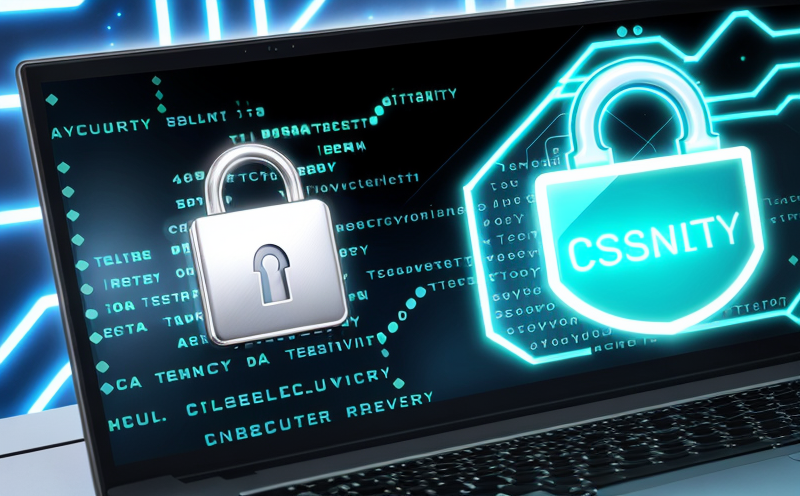ISO/IEC 27035 Incident Response Testing in Smart Home IoT Systems
The implementation of Internet of Things (IoT) devices into smart home systems has transformed how we interact with our living spaces, offering unprecedented convenience and efficiency. However, these interconnected devices also introduce new security vulnerabilities that could be exploited by malicious actors. ISO/IEC 27035 Incident Response Testing in smart home IoT systems is designed to ensure that organizations are prepared for potential security incidents. This service involves simulating real-world attack scenarios and evaluating the effectiveness of incident response plans, thereby enhancing the overall cybersecurity posture.
According to ISO/IEC 27035, an effective incident response process should be able to detect vulnerabilities early in the lifecycle, respond swiftly during a security event, and recover from any disruption. This testing not only verifies compliance with international standards but also ensures that organizations are equipped to handle incidents such as unauthorized access, data breaches, or system failures.
The service typically involves several phases: planning, identification, containment, eradication, recovery, and lessons learned. During the planning phase, we work closely with your organization to understand existing security protocols and identify potential weaknesses. In the identification phase, we simulate attacks and monitor the system for signs of compromise. The containment phase focuses on isolating affected systems to prevent further damage, while the eradication phase involves eliminating any malicious content or processes.
The recovery phase ensures that normal operations can resume as quickly and safely as possible. Finally, in the lessons learned phase, we review the entire process to identify areas for improvement and implement changes to enhance future response capabilities.
| Industry Applications |
|---|
| Home automation systems Smart appliances Connected security devices Energy management systems |
The table above highlights some of the primary applications where ISO/IEC 27035 Incident Response Testing is critical. In home automation, for instance, smart thermostats and lighting systems are highly vulnerable to unauthorized access. Similarly, connected security devices such as cameras and doorbells could be compromised, leading to privacy violations or even physical threats.
- Home automation systems
- Smart appliances
- Connected security devices
- Energy management systems
The real-world impact of a security breach in these systems can be significant, ranging from financial losses due to unauthorized transactions to reputational damage and legal consequences. By conducting this type of testing, organizations can mitigate risks and safeguard their assets.
Industry Applications
- Home automation systems
- Smart appliances
- Connected security devices
- Energy management systems
The testing of smart home IoT systems is particularly important given the increasing reliance on interconnected devices for everyday tasks. Home automation systems, which control everything from lighting to heating and cooling, are prime targets for cybercriminals seeking to exploit vulnerabilities in these networks.
Smart appliances such as refrigerators, washing machines, and ovens can also be compromised, leading to potential data breaches or even physical harm if controls are altered. Connected security devices like cameras and doorbells provide valuable insights into home environments but could be used maliciously if not properly secured. Energy management systems that monitor electricity usage can be exploited for unauthorized access or manipulation of energy consumption.
Our testing ensures that these devices are resilient against various types of attacks, including denial-of-service (DoS) attacks, malware infections, and phishing attempts. By simulating these scenarios in a controlled environment, we help organizations identify potential weaknesses before they become critical issues.
Customer Impact and Satisfaction
The primary goal of ISO/IEC 27035 Incident Response Testing is to provide peace of mind for our customers. By demonstrating that their smart home IoT systems are secure against potential threats, we help them maintain trust with their customers and employees. This level of assurance can translate into increased customer satisfaction and loyalty.
Our testing process also ensures compliance with international standards such as ISO/IEC 27035, which sets the benchmark for incident response practices. By adhering to these guidelines, we help organizations meet regulatory requirements and avoid costly fines or sanctions.
In addition to meeting legal obligations, our customers benefit from improved operational efficiency. The testing process identifies areas where security protocols can be strengthened, leading to more robust systems that are less likely to suffer from downtime or other disruptions. This not only enhances productivity but also reduces the risk of data loss and theft.
Feedback from satisfied clients reinforces our commitment to delivering high-quality services. Many have reported improved confidence in their ability to protect sensitive information and maintain a secure online presence. The testing process has helped them identify potential risks early on, allowing for timely mitigation strategies that prevent costly breaches or attacks.
Competitive Advantage and Market Impact
The implementation of robust incident response plans is becoming increasingly important as the smart home IoT market continues to grow. By providing comprehensive testing services aligned with ISO/IEC 27035 standards, we give our clients a competitive edge in an ever-evolving landscape.
- We offer advanced threat detection capabilities that go beyond basic security measures. Our team of experts uses cutting-edge technology to identify vulnerabilities and potential risks before they become critical issues.
- Our testing process ensures compliance with relevant international standards, giving clients confidence in their ability to meet regulatory requirements and avoid legal challenges.
The market impact of our services extends far beyond individual organizations. By promoting best practices for incident response within the smart home IoT sector, we contribute to a safer digital environment for everyone. This collective effort helps protect consumers' privacy and personal data from malicious actors who seek to exploit weaknesses in interconnected systems.
Our clients benefit not only from enhanced security measures but also from improved brand reputation and customer trust. These factors play a crucial role in maintaining long-term relationships with customers, which ultimately contributes to business growth and success.





